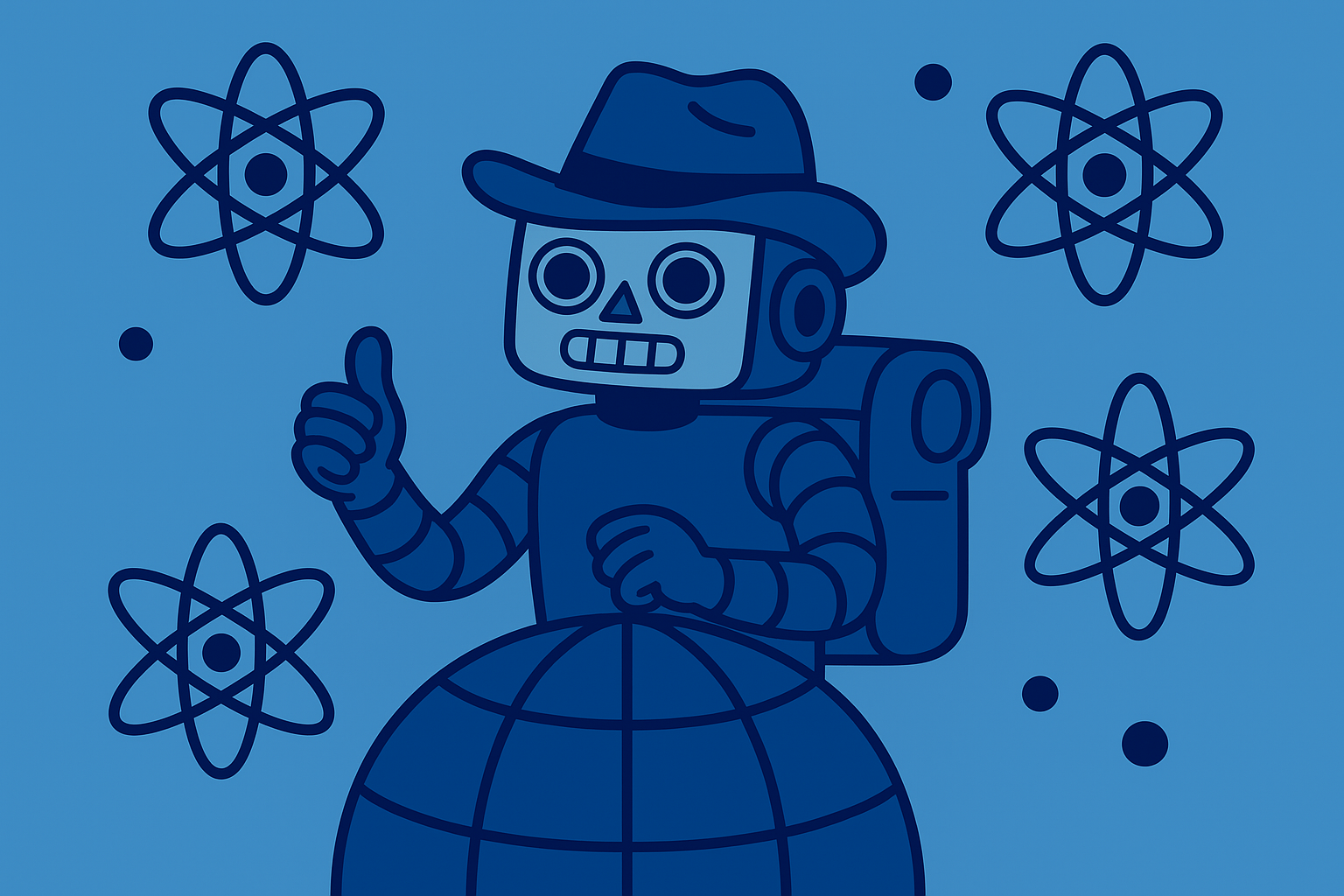Building Agentic AI Applications with a Problem-First Approach: Our Take

90% of agentic AI projects fail, but the 10% that succeed share one critical trait: they start by solving a real problem, not showcasing fancy technology.
The agentic AI market is on fire, projected to explode from $4.3 billion today to over $100 billion by 2034. Yet Gartner warns that more than 40% of these projects will be scrapped by 2027. The gap between promise and reality has never been wider. Companies are pouring millions into autonomous AI systems, only to watch them fail spectacularly, because they're building solutions in search of problems.
What Makes Agentic AI Different
Forget everything you know about traditional AI assistants. Agentic AI it's an autonomous digital employee that thinks, plans, and acts independently.
While a chatbot might answer "What's the weather?" when asked, an agentic AI system notices you have an outdoor meeting scheduled, checks the forecast, sees rain coming, and proactively suggests rescheduling or moving the meeting indoors. It takes initiative.
The evolution has been dramatic. We've moved from:
- Rule-based systems that followed rigid if-then scripts
- LLM assistants that could understand and generate human-like responses
- True agents that combine reasoning, memory, and tool use to pursue goals autonomously
Reactive versus proactive AI.
Traditional systems respond when prompted. Agentic AI observes, decides, and acts, looping through tasks, spawning sub-goals, and adjusting strategies based on feedback. It's the difference between a calculator that computes when you press buttons and an accountant who manages your books, files your taxes, and alerts you to savings opportunities.
These agents orchestrate workflows. They can access APIs, query databases, update systems, and coordinate multiple tasks toward a higher objective. When an agentic customer service system handles a complaint, it checks order history, initiates refunds, updates inventory, and schedules follow-up, all while learning from each interaction to improve future performance.
The Problem-First Philosophy
Here's where most organizations go catastrophically wrong: they build AI agents because they can, not because they should.
Defining the problem before the solution sounds obvious, yet it's surprisingly rare in the AI gold rush. Too many teams start with "Let's implement an AI agent!" instead of "Our customer support team spends 70% of their time on repetitive password resets that could be automated."
The "AI-first" approach is a recipe for disaster. It leads to:
- Vague goals like "improve efficiency" that can't be measured
- Unclear ROI because success was never defined
- Gartner's dreaded "agent washing", where companies rebrand basic chatbots as sophisticated agents to ride the hype wave
The success formula is straightforward: specific metrics beat generic aspirations. Compare these two project charters:
- "Implement AI agents to enhance customer experience"
- "Reduce appointment no-shows by 45% through automated, personalized reminder systems"
The second approach forces clarity. You know exactly what problem you're solving, who benefits, and how to measure success. It transforms AI from a science experiment into a business tool.
Where Agentic AI Delivers Real Value
The success stories share a pattern: they target well-defined, repetitive, high-volume processes where autonomous decision-making creates immediate value.
- Customer Service Transformation: Klarna built an AI agent to solve a real operational bottleneck: overwhelming customer support volume. Their AI assistant now autonomously handles order issues, refunds, returns, product discovery, and personalized shopping guidance. The results are staggering: over 2.3 million conversations handled per month, the equivalent workload of ~700 full-time support agents, while maintaining high CSAT. Klarna’s success comes from pairing a clearly defined use case with a rigorous observability and evaluation pipeline that continuously monitors reasoning quality, detects failure patterns, and improves performance.
- Healthcare's Administrative Revolution: Emirates Hospital in Dubai tackled a specific pain point: appointment no-shows. Their agentic system doesn't just send generic reminders. It personalizes outreach, handles confirmations and rescheduling, and follows up post-visit. The impact? No-show rates plummeted from 21% to 10%, a 50% reduction that translates directly to better resource utilization and revenue recovery.
- Supply Chain Intelligence: DHL's autonomous routing agents continuously optimize delivery paths based on real-time conditions. Traffic jam on the usual route? The agent reroutes.Weather disrupting operations? It adjusts schedules proactively. The measurable wins: 30% improvement in on-time deliveries and 20% fuel savings. These are transformative results from letting AI handle dynamic, data-rich decision-making.
- Financial Services Scale: Bank of America's Erica has handled over a billion customer interactions, from fraud detection to transaction execution. But the real magic happens behind the scenes, where internal agents automate compliance checks and data reconciliation, speeding up processes by 3x while cutting costs dramatically.
The pattern is clear: agentic AI excels where you have clearly defined processes, measurable outcomes, and sufficient volume to justify the investment. It's not about replacing humans, it's about augmenting human capabilities in areas where speed, scale, and consistency matter most.
Why Most Fail
Here's a shocking statistic: 70% of AI agent frameworks don't properly test their core reasoning components. Teams obsess over testing deterministic parts, the APIs, the workflows, the integrations, while ignoring the probabilistic "brain" of the system. Agents that hallucinate make inconsistent decisions, or fail catastrophically when encountering edge cases; PromptLayer directly addresses this by giving teams deep visibility into how reasoning chains unfold, showing each step of the agent’s thought process, tool invocations, decisions, and failure modes. Teams can trace the exact reasoning path and fix it with precision.
Over-Reliance Risks: The "set and forget" mentality kills more projects than any technical limitation. Organizations deploy agents and assume they'll run perfectly forever, like traditional software. But agentic AI isn't static, it's a living system that can drift, degrade, or develop bad habits without oversight. Only 25% of agentic solutions operate completely independently; the rest require human monitoring precisely because full autonomy remains risky.
Data Quality Challenges: The oldest rule in computing applies doubly to AI agents: garbage in, garbage out. Feed an agent outdated product information, and it'll confidently sell items you discontinued months ago. Many organizations underestimate the grunt work needed to clean, organize, and maintain data quality. If your knowledge base is a mess, your agent's decisions will be too.
Security Vulnerabilities: Hand an AI agent access to critical systems, and you've created a new attack vector. Prompt injection attacks can manipulate agent behavior. Lack of access controls can turn a helpful assistant into a security nightmare. The autonomous nature that makes agents powerful also makes them dangerous when compromised.
From Gold Rush to Gold Standard
Your competitive edge will come from asking the sharpest questions: Which process costs us $2M annually in inefficiency? Where do we lose customers to frustration, not features? What decision bottleneck keeps our best people trapped in busywork?
The organizations rewriting their industries are the ones who solved appointment no-shows, delivery routing, and support ticket backlogs with ruthless focus. They defined success in numbers. They built agents that complement human judgment.
Stop building AI agents because you can. Start building them because you must, because you have a specific problem that demands solving, metrics that need moving, and users whose lives you can measurably improve.



